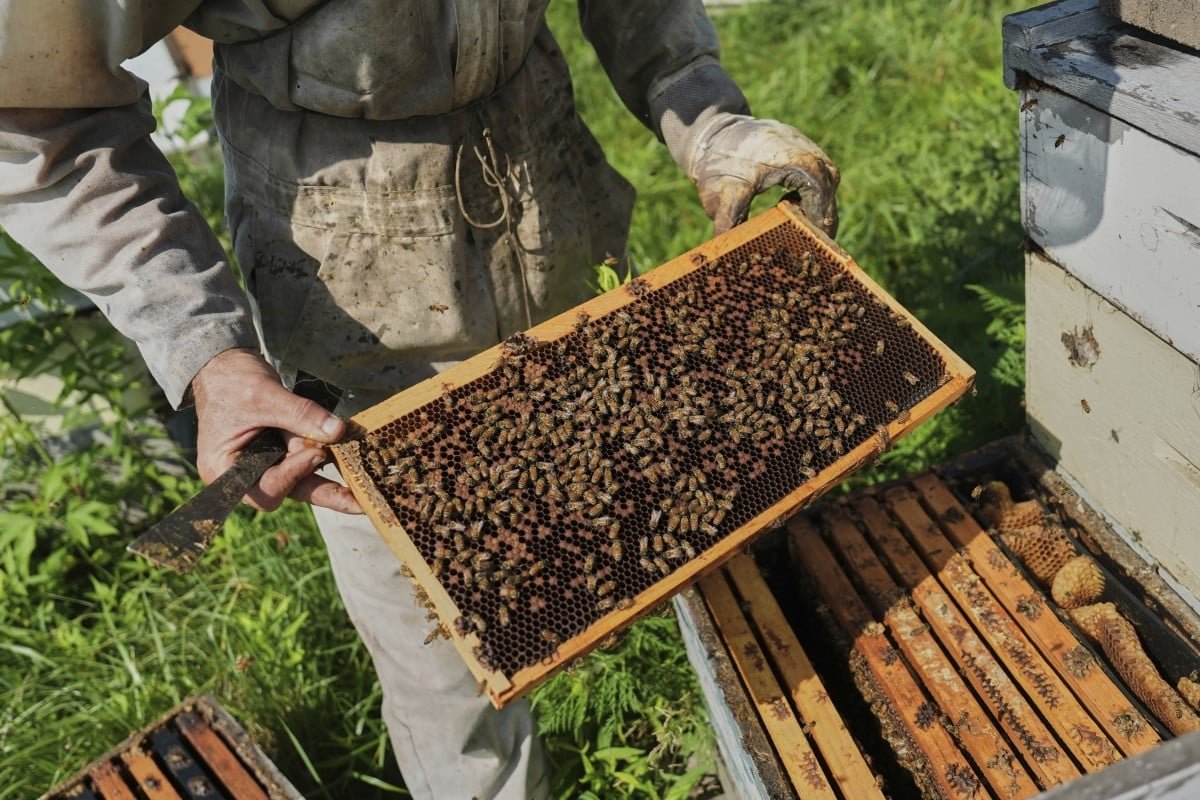Isaac Barnes wipes sweat from his face as he hauls boxes of honeycomb under the summer sun in Ohio. While he’s sweltering, the bees buzzing around his hives are enduring even higher temperatures. Their body heat can soar up to 15 degrees Celsius above the surrounding air. As climate change drives temperatures higher, researchers are urgently investigating how extreme heat affects both managed and wild bees.
Recent studies show bees adjust to high temperatures by flapping their wings harder and less frequently to avoid overheating, or by retreating into the shade and their nests—mirroring human behavior under heat stress. But these strategies come at a cost. Reduced activity means bees gather less nectar, mate less, and ultimately pollinate less.
Most bees are naturally heat-tolerant, but increasing temperatures combined with other stressors—like pesticide exposure, disease, and lack of diverse forage—are pushing them to their limits. When bees are weakened, their resistance to parasites like mites also drops. Barnes, who runs Honeyrun Farm, highlights the challenge of managing mites in heat. Formic acid treatments, which control mite populations, can’t be used when it’s too hot, or the bees may die. This situation contributed to Barnes losing nearly a third of the hives he sent to pollinate almond orchards in California last year.
Bees’ habitats are changing too. In Ohio, for example, vast expanses of corn and soybean fields offer little nutritional diversity. Native blooms like goldenrod are now appearing later in the season, disrupting bees’ feeding cycles. Barnes supplements their food to help hives survive into winter.
Bee populations are already under pressure. Preliminary results from a U.S. survey show managed colonies declined by nearly 56% from April 2024 to April 2025—the highest annual loss recorded. Since most honeybee colonies in the U.S. are used for crop pollination, fewer bees could mean lower agricultural yields and higher food prices.
Despite the growing urgency, research funding is at risk. Proposed budget cuts could defund vital bee research programs, hindering scientists’ ability to understand and address pollinator declines. Without such research, the ripple effects could jeopardize not only biodiversity but global food systems.
As Barnes puts it, “Every plant that blooms is something a bee can use. And every single plant is affected by climate change.”
READ MORE:
